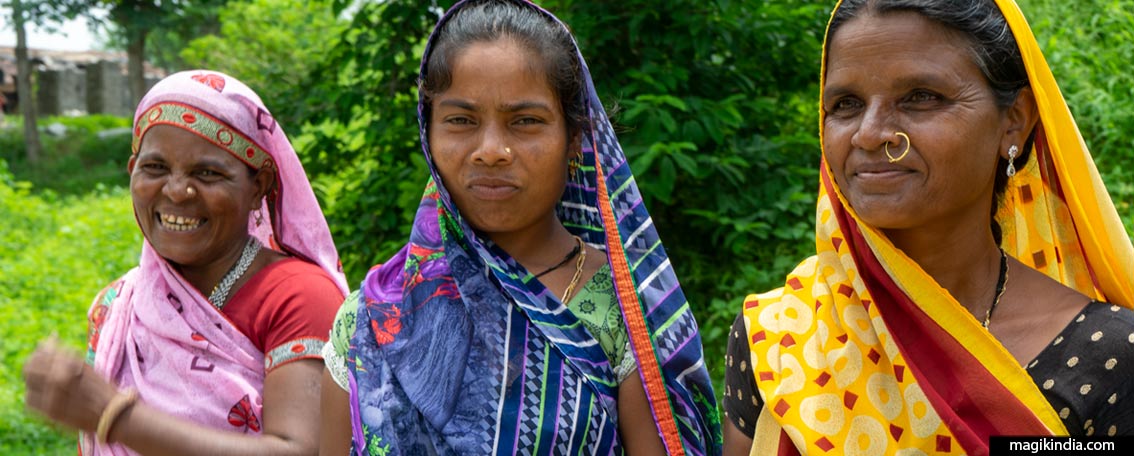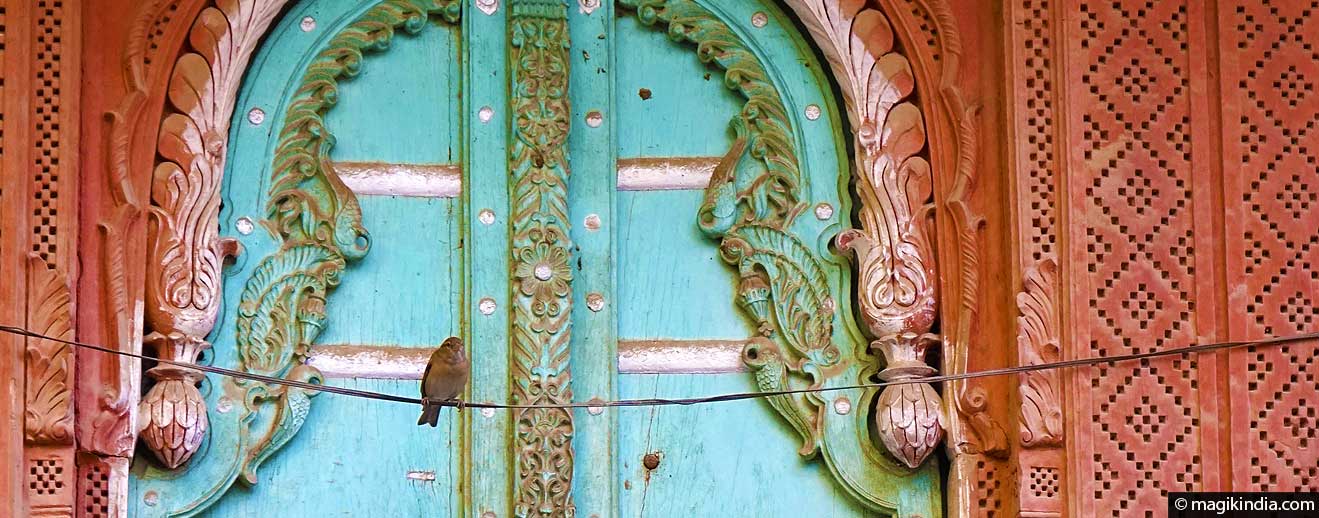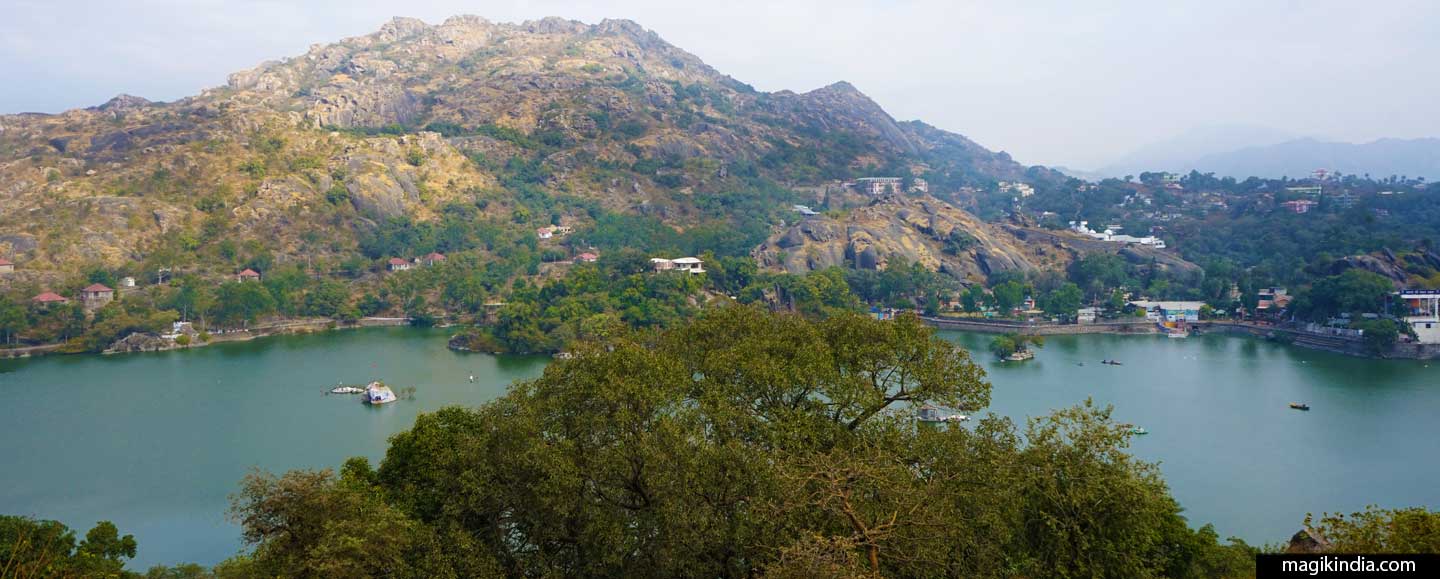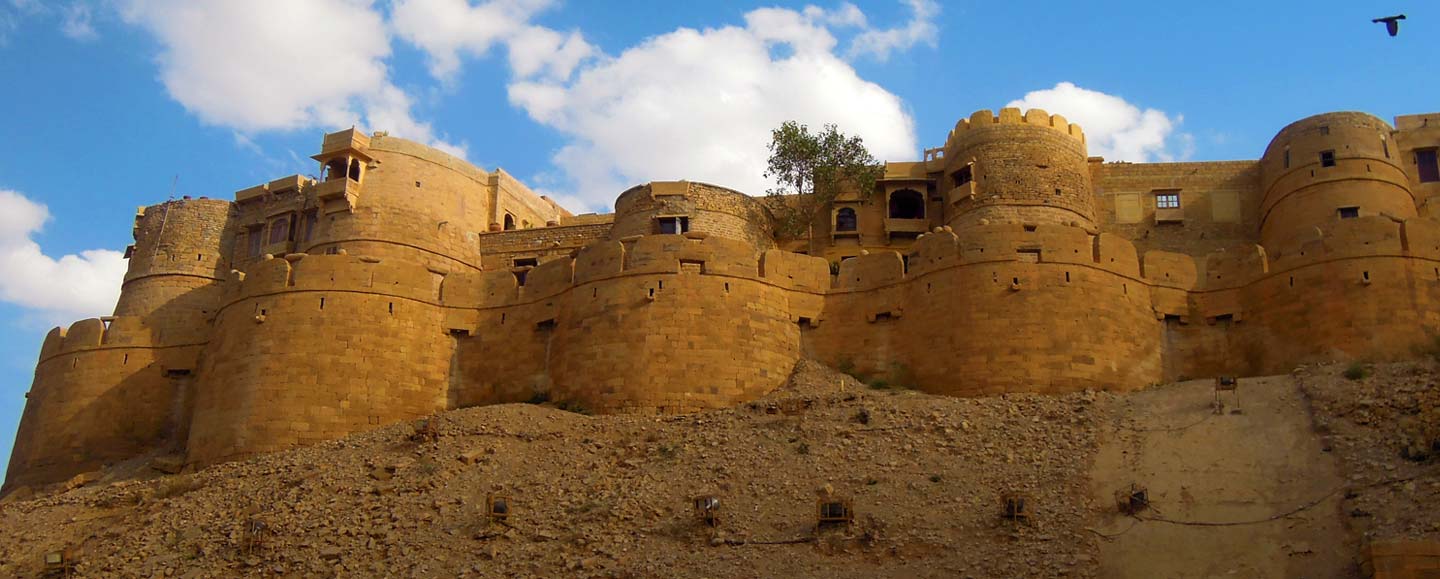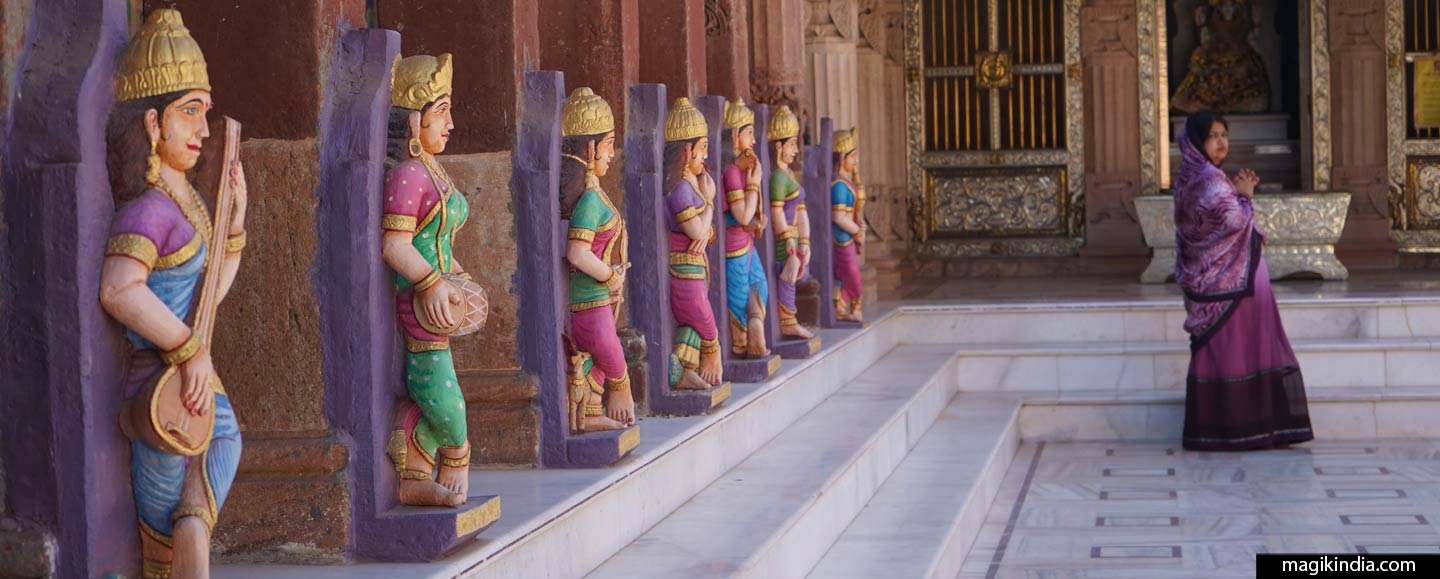Sarneshwar Mahadev, the temple-fort of Sirohi
Sirohi is a small city located in the south of Rajasthan two hours from Udaipur, the romantic city of lakes. It was once the capital of the princely state of the same name ruled by the Rajput Deora Chauhan. Within it stands a highly venerated temple, Sarneshwar Mahadev, protected upstream by a hill and surrounded by two long walls – an indication that this sacred place was once the scene of several battles. These battles pitted forces led by Maharao Vijay Chauhan alongside the Rabari community against the ruthless Sultan of Delhi, Alaud-Din Khilji.

Sirohi takes its name from the hill “Siranwa”, on the western slope of which the city stands.
Before the inception of Sirohi it was the city of Shivpuri, founded in 1405 by Rao Sobhaji or “Virji”* which stood not far away, on the eastern slope of Siranwa hill which is called Khuba. There, ruins of the old town still stand as does a memorial dedicated to Virji.
In 1425, his son and successor, Sahastramal, erected a fortress on the eastern slope of the same hill which became his capital and the current city of Sirohi.
*sixth descendant of Rao Deoraj, the ancestor of the Deora Chauhan clan
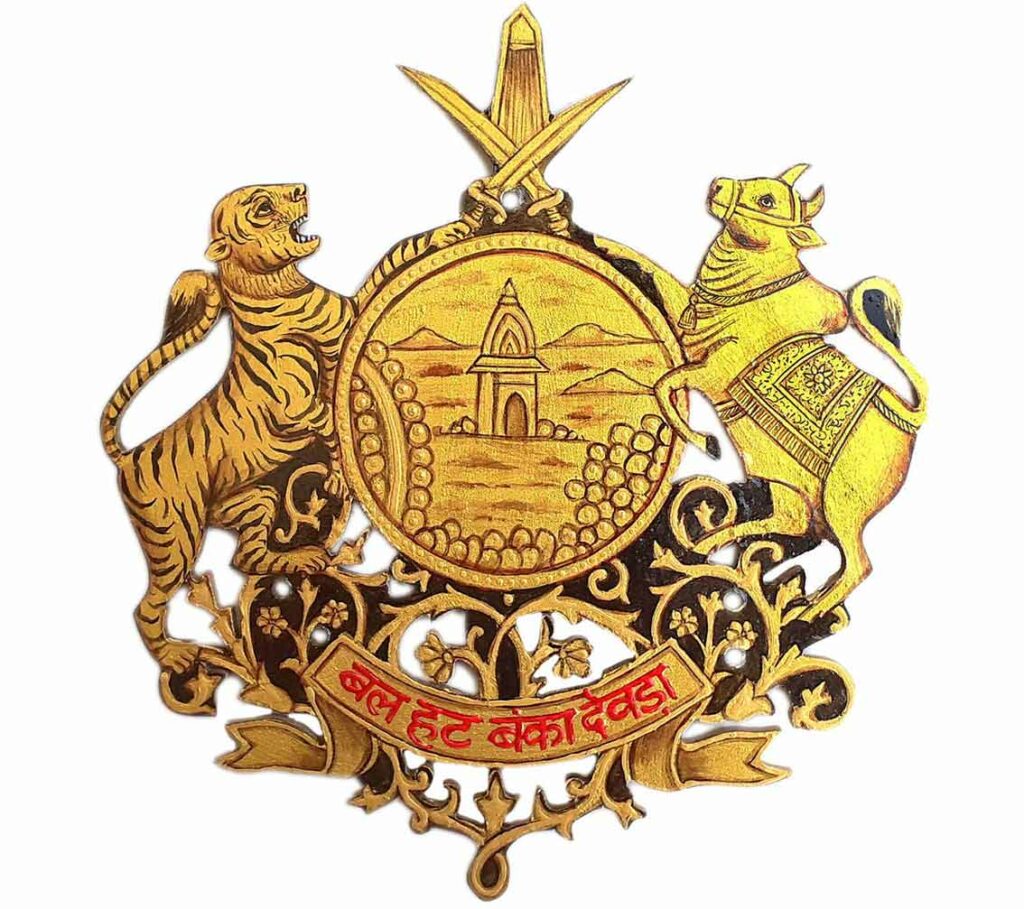
Ten minutes north of this palace-fortress, stands the temple of Sarneshwar Mahadev, dedicated to Shiva and Kuldev (tutelary deity) of the royal family of Sirohi. Its watchtowers and immense walls are a vivid reflection of its history.
The history of Sarneshwar Mahadev temple of Sirohi
The origin of the Sarneshwar temple is closely linked to that of the fierce Alaud-Din Khilji, Sultan of Delhi from 1296 to 1316.
After strengthening his control over the Indo-Gangetic plains (Pakistan, northern India and Bangladesh), he decided, in 1297, to invade Gujarat, ruled at that time by King Karna of the Vaghela dynasty, in order to “subdue the infidels and destroy the Hindu idols”
The army of Alaud-Din Khilji was able to rapidly seize Gujarat, owing to the lack of preparation and the ineffectiveness of the troops of King Karna.
Much of Gujarat was sacked and the enemy forces. Hindu temples were particularly targeted. This was the case with the temple of Rudra Mahalaya in Siddhpur in northern Gujarat, whose main deity, a Shiva-lingam, was removed by the sultan’s troops.

The return journey to Delhi led the Sultan’s army to the kingdom of Sirohi. Its king at the time Maharao Vijay Singh, made it a point of honour to recover the sacred lingam, even at the cost of his own life.
When the Sultan’s soldiers approached Sirohi, Rajput troops swooped down on them and emerged victorious from the ensuing battle. They recovered the Shiva-lingam which they placed in a sanctuary at the foot of Siranwa hill where the battle took place. The Maharao gave it the name of “Ksharneshwar” which later became “Sarneshwar”.
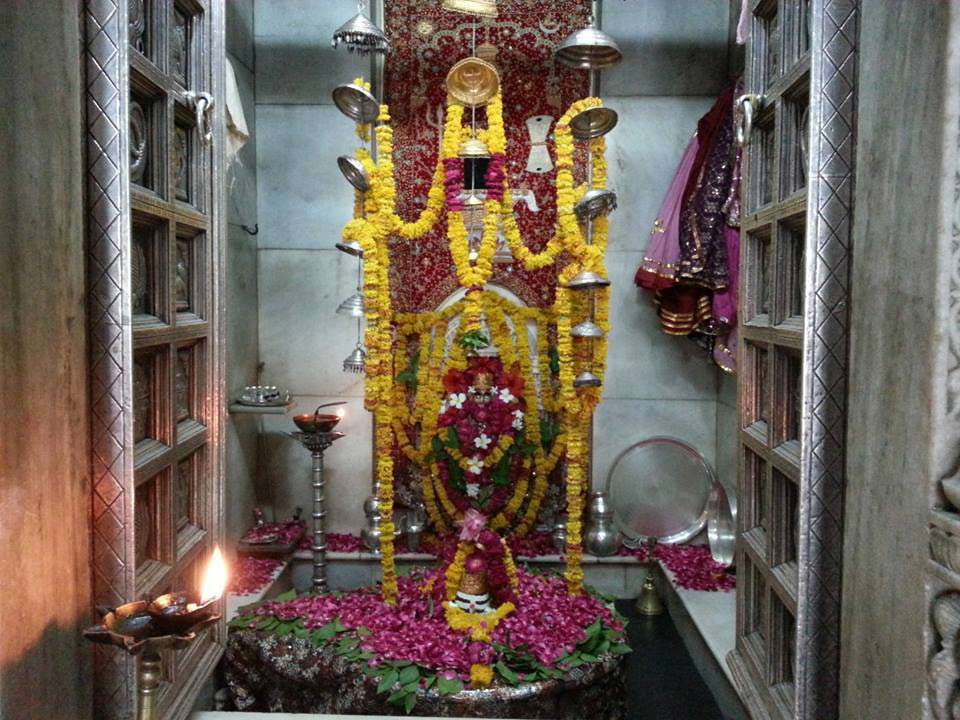
The story also tells that Alaud-Din Khilji who, offended by the defeat of 1298, returned to Sirohi with his troops but suffered a second defeat. It is also said that he was cured of leprosy by the water in the temple basin. As a result he swore that he would never attack Sirohi again and had the inner wall of the temple built.
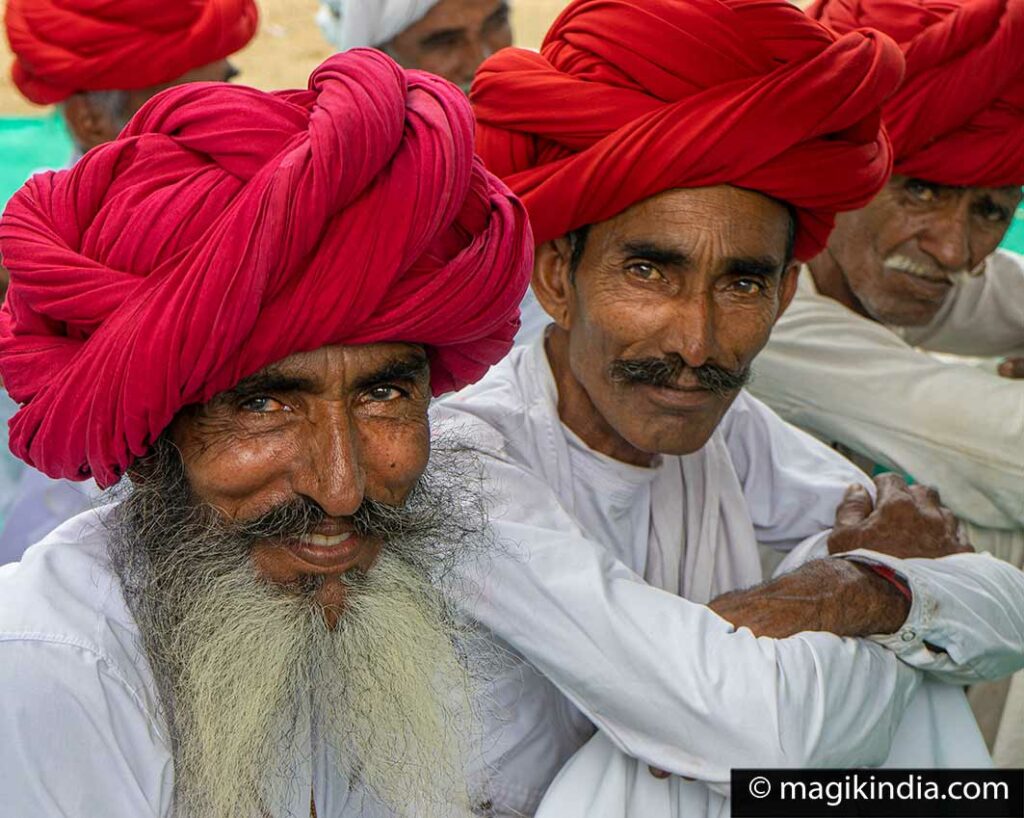
During these two battles thousands of Rabaris, camel herders and temporary warriors of this war, lost their lives. The second victory came at the time of Bhadrapada Shukla Ekadashi. This day was consecrated as a day in memory of the valiant Rabaris by Maharao Vijay and since that time an annual fair has been organized in the temple complex of Sarneshvara ji.
Sarneshwar Mahadev temple architecture
We enter the temple grounds through an imposing gate flanked by two watchtowers. From there, you can already see the two long walls surrounding the temple, partly built on the side of Siranwa hill.
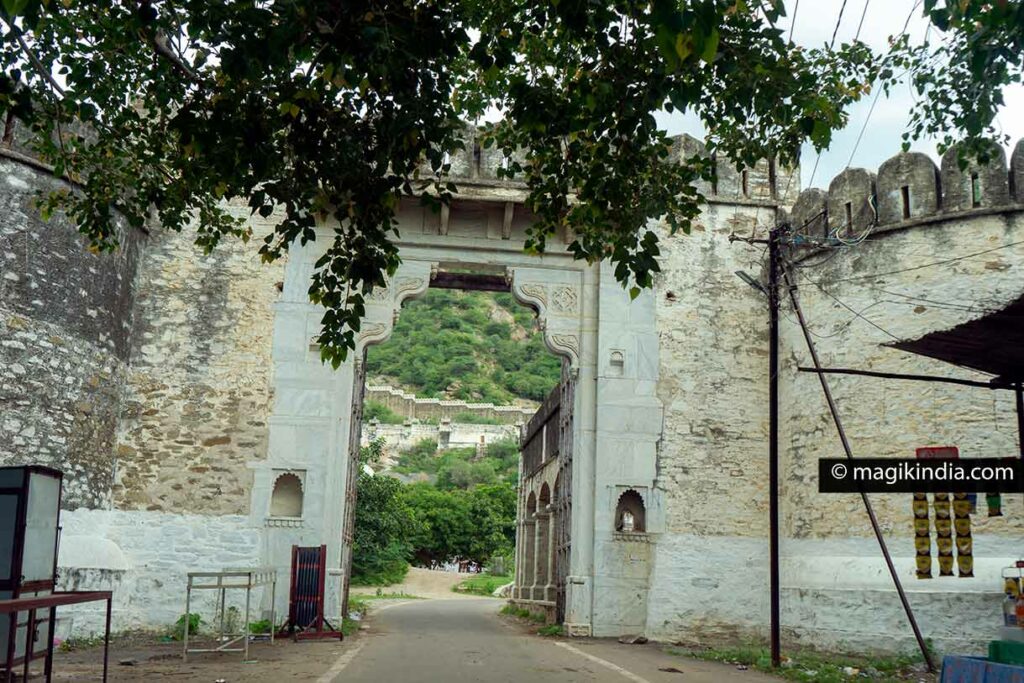
Sarneshwar ji is now a few hundred yards away and the first impression upon arrival is awe-inspiring.
The sanctuary, dressed in white, is guarded by three huge elephants, two at the entrance and one in front, both painted black and ridden by armed men. Overlooking the elephants, two massive watchtowers with loopholes reinforce the protection of the place.

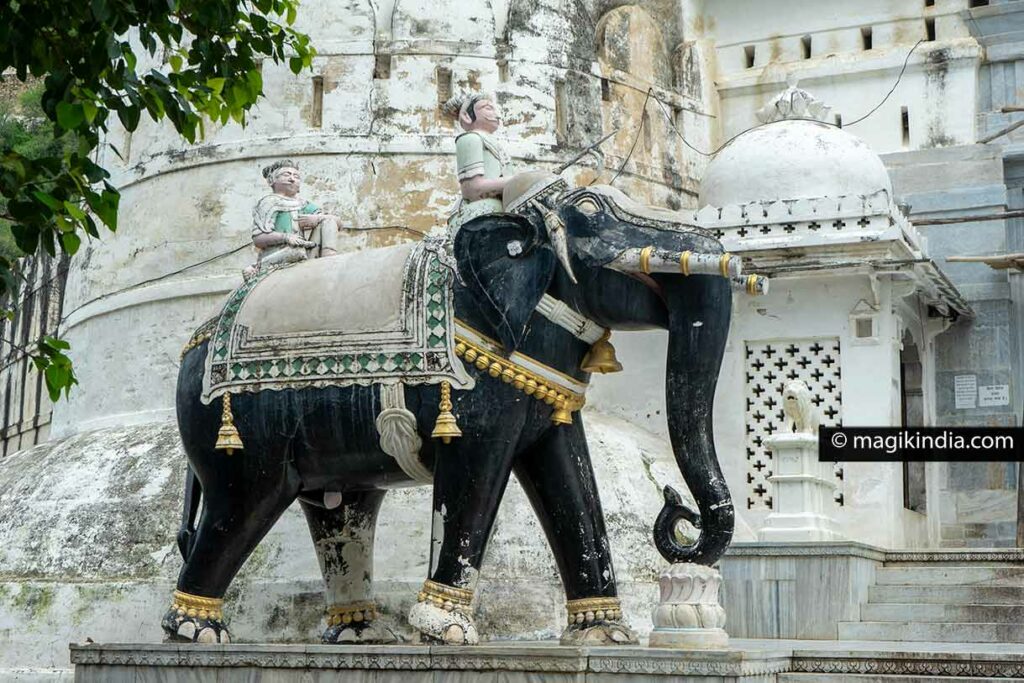
Before entering the temple complex there are two small altars on each side. The left alter dedicated to the monkey-god Hanuman – symbolising devotion and the right, to Ganesha – who is invoked to attract good luck.
The wide wooden entrance door opens to a large courtyard. In its centre lies the main temple, dedicated to Sarneshwar, a form of the god Shiva, symbolised by a Shiva-lingam, the very same lingam that was stolen in Siddhpur by the armies of the Sultan of Delhi (see above).
The temple built in gray-green sandstone has a sober architectural style. The mandala (hall) is supported by twenty simple pillars and its dome is adorned with twelve female figures resembling female spirits or apsaras.
Two heavy silver doors open onto the sanctum sanctorum which contains the Shiva-lingam and its feminine counterpart, the Shakti (goddess Durga) at the back.
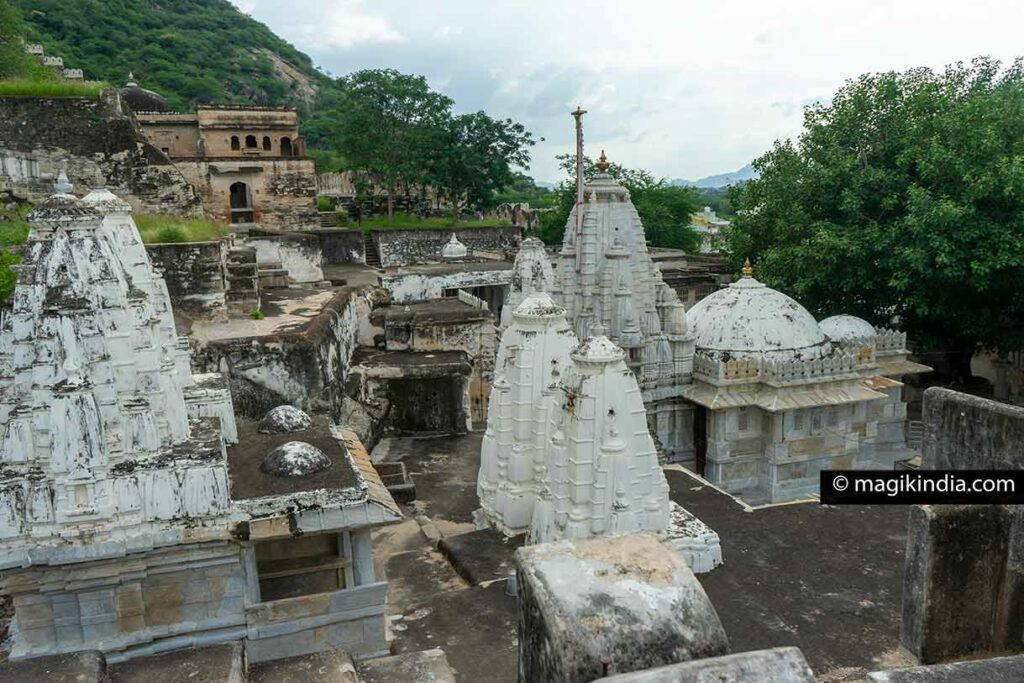
Sarneshwar has undergone several additions over time. The major renovation being carried out in the early 16th century CE by Maharani Apurva Devi, wife of the Maharao Lakha of Sirohi. In particular, she placed the idol of Hanuman outside the main door of the temple.
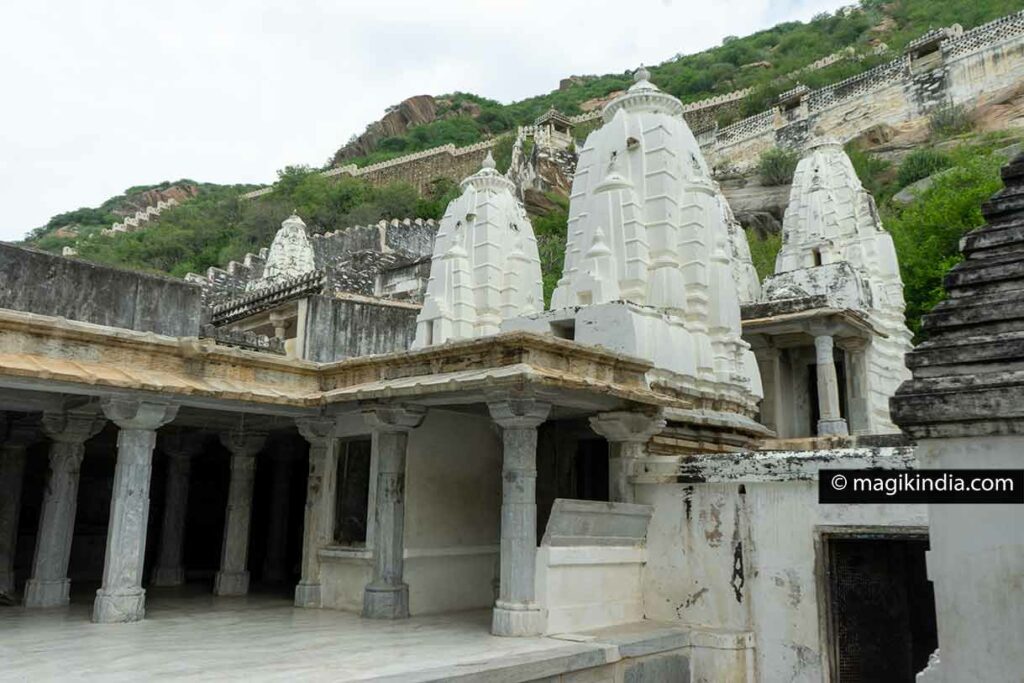
Around the main shrine are a myriad of small temples dedicated to different deities, notably Vishnu and Shiva. These statues are nicely polished by time, an indication of their age; The Shiva-lingam with 108 mini-lingams attracts particular attention.
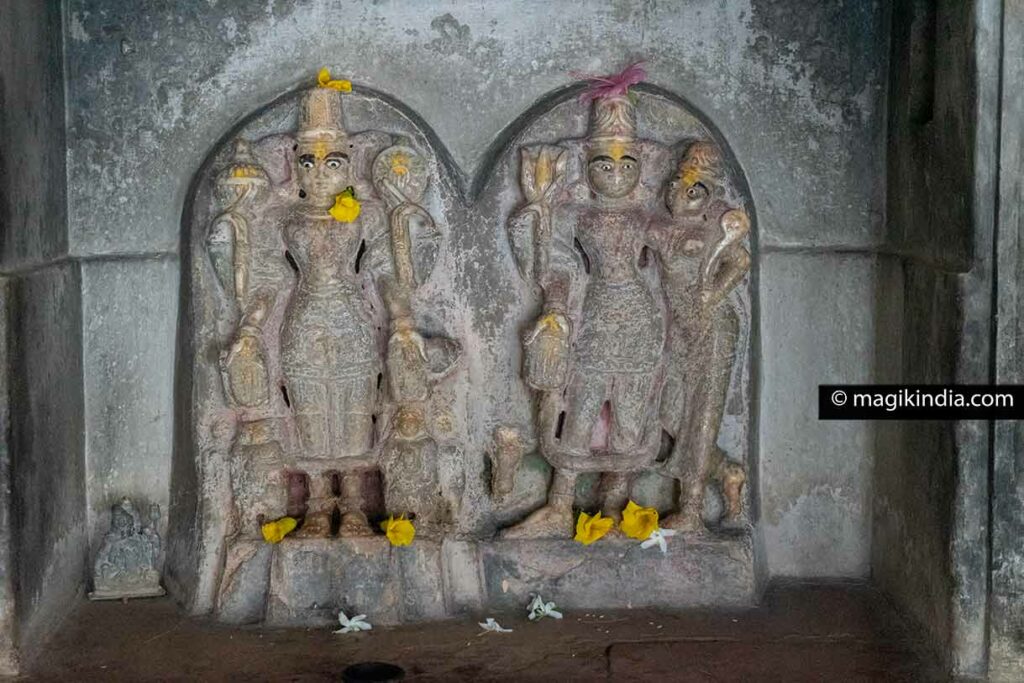
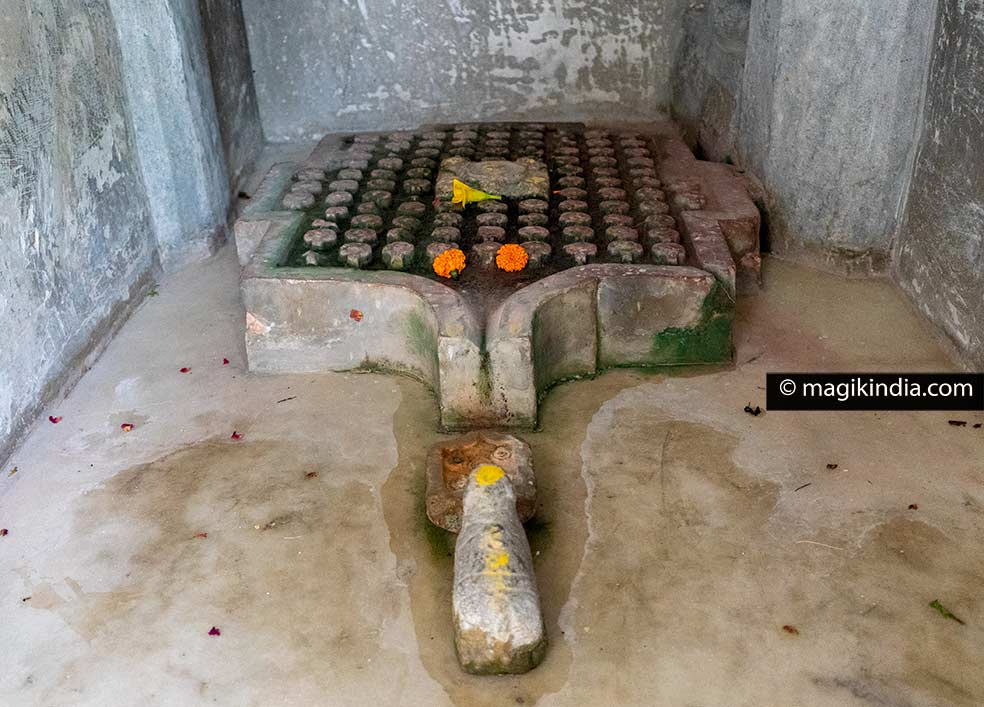
The two walls, set on the side of Siranwa hill are probably the most impressive aspect of the place. Dotted with several watchtowers, one surrounds the temple complex itself (it would be the one built by the Sultan of Delhi) and the other, a hundred meters on, descends to the bottom of the hill and embraces the Mandakini pond.
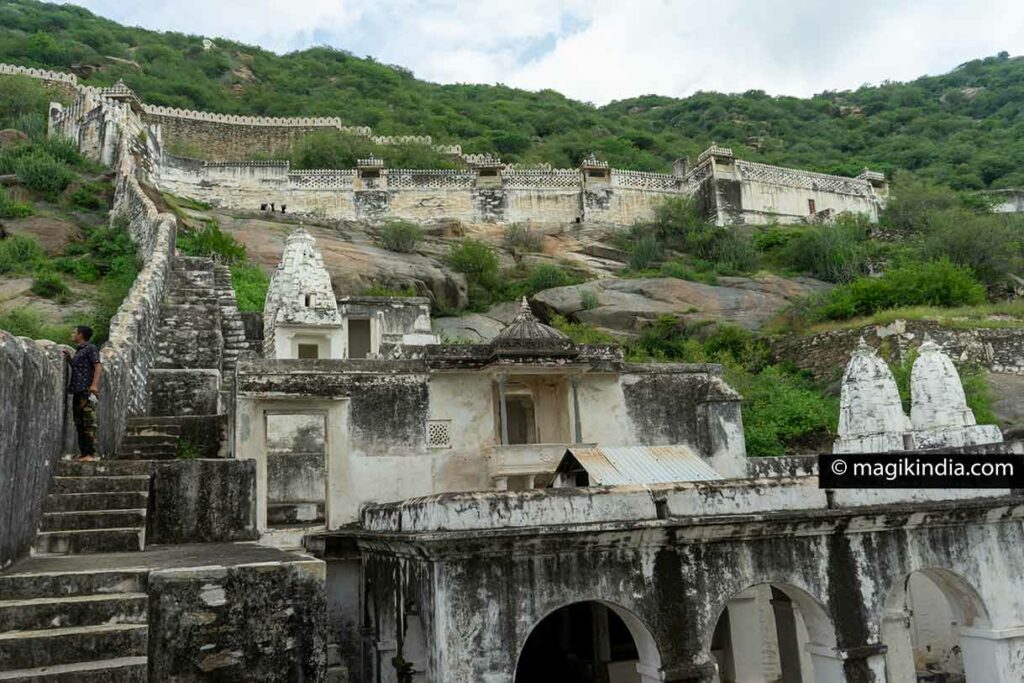
The Mandakini pond is one of the many water points in the temple. Spring waters from the hill fill several basins inside the temple which, during the rainy season, flow outside into the Gomukh (the basin with a cow’s head) at the left of the entrance of the temple and to the Mandakini Pond in front of the temple complex.
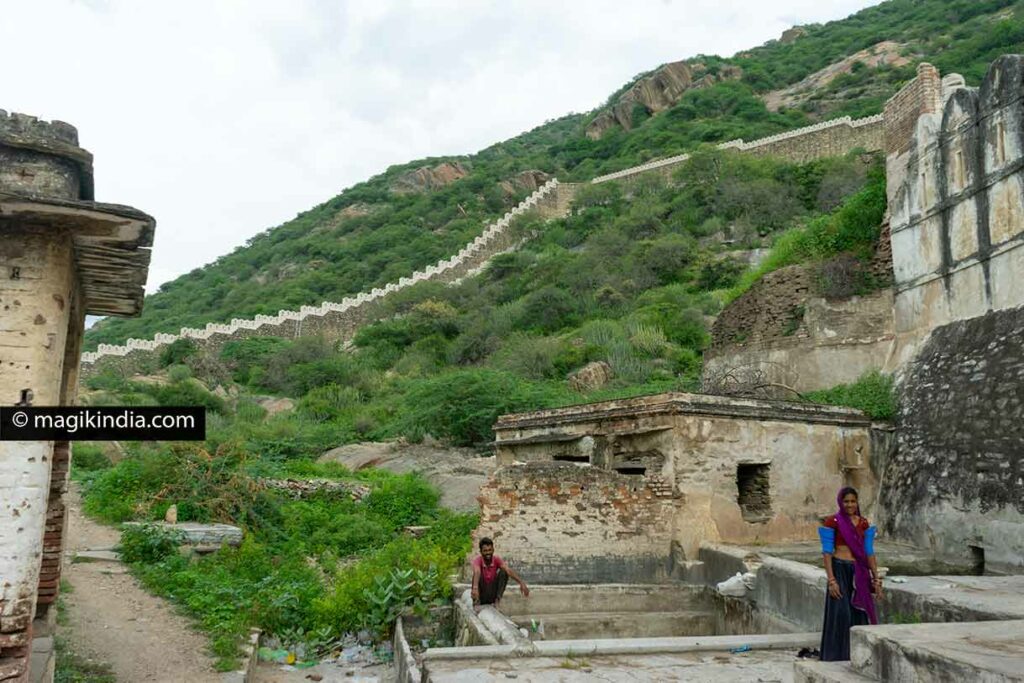
The Mandakini Kund, is used by pilgrims to take a sacred bath (Snan) during major festivals of the Hindu calendar. On the banks of this pond several chhatris (cenotaphs) stand, built by the rulers of Sirohi.
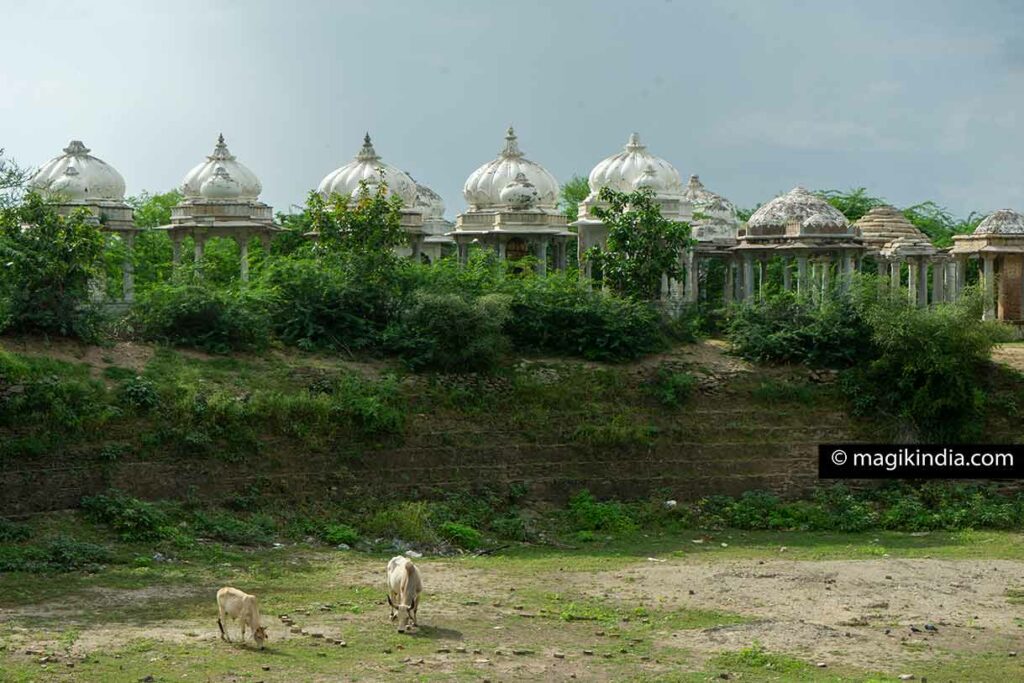
To the right of the temple a beautiful brick building in the Haveli (mansion) style catch the eye with its corbelled balconies. According to a local resident it was built around the same time as the temple by Maharao Vijay Singh. Today it is no longer used but, nevertheless, remains one of the witnesses of the fabulous history of the temple of Sarneshwar ji.
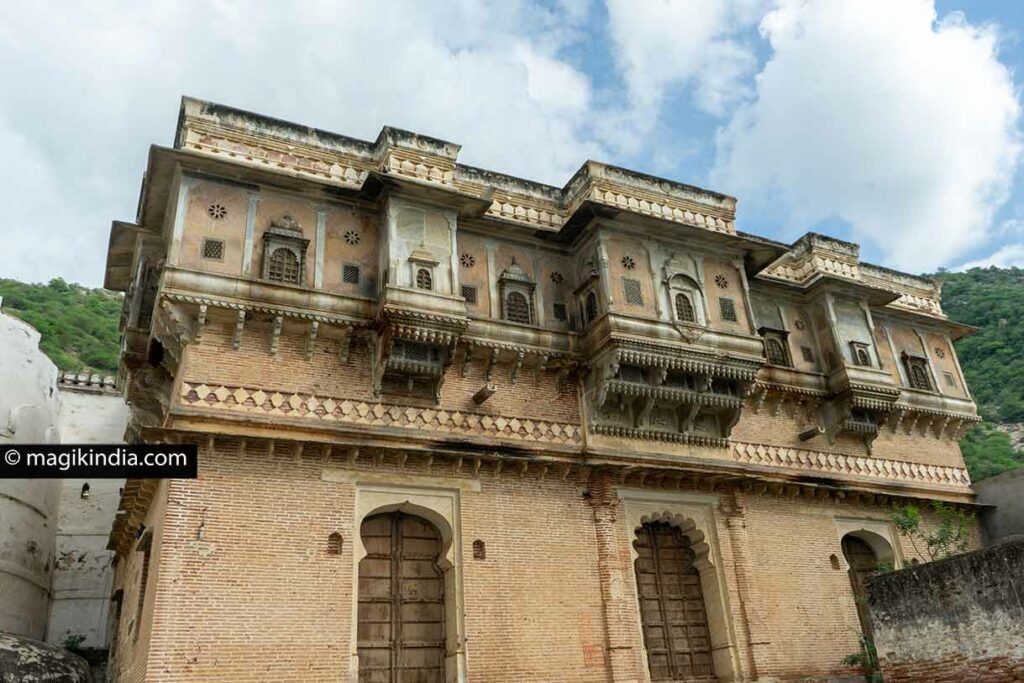
The festivals of the temple
The temple follows the festivities of the Hindu calendar and is particularly active during Mahashivaratri.
However, here the major festival is that of “Dhaje Ri Gyaras” known more popularly as “Sarneshwar ji fair”.
It is organized during Bhadrapada Shukla Dev Jhulni Ekadashi by the Rabari community in memory of their ancestors and the sacrifices they made during the battles against the Sultanate of Delhi (see above).
Bhadrapada or Bhadra is the month in the Hindu calendar which corresponds to August / September in the Gregorian calendar and Shukla Ekadashi takes place on the eleventh day of the two lunar cycles of the month, Krishna and Shukla Paksha. It is considered as a day of “Anand Prada”, that is to say, the day that “instills happiness”.
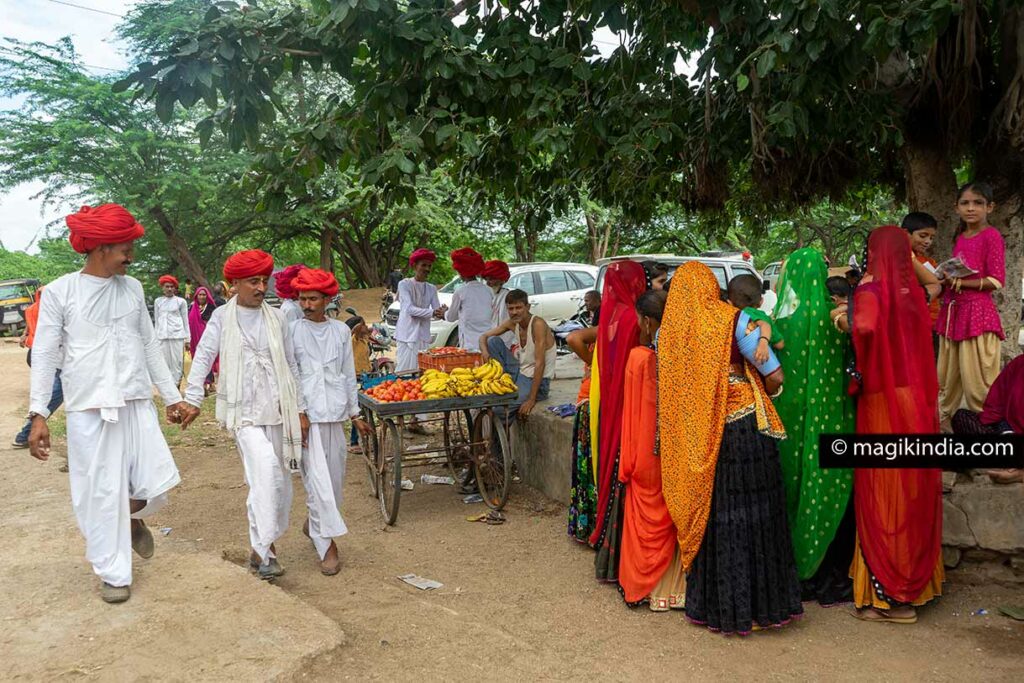
During these festivities, which include traditional dances, songs, religious rituals and an outdoor fair, only the members of the Rabari community are admitted. Furthermore, Rabari men and women are required to wear their traditional outfits (see my article on Rabari), a great opportunity to continue the ancestral traditions of the Rabari people!



